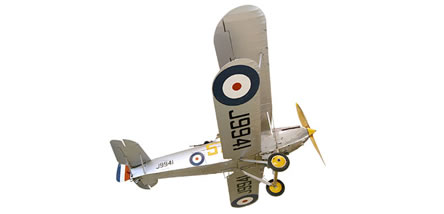Hawker Hart II
| Serial No: | G-ABMR 'J9941' |
| Period: | Pre-WWII |
| Reference: | 74/A/29 |
| Museum: | London |
| Location: | Hangars 3 and 4 |
| On Display: | Yes |
First flown in July 1928, the Hart day bomber was one of the most advanced aircraft of its time with exceptional capability. Although designed as a bomber it had a performance superior to any fighter aircraft then in existence.
Over four-hundred Harts were built for the Royal Air Force and seven home-based regular bomber squadrons were equipped as well as eleven auxiliary and reserve units. Less than two years after its introduction into service at home, Harts were being used by overseas squadrons in the Middle East and India.
With such an exceptional basic design Sydney Camm and the Hawker team were able to develop later versions. The Audax, Demon, Hardy, Hind and the Hector all show clearly how important the Hart influence was on a whole era of British aircraft design. A number of these later types saw limited operational use in World War Two. So advanced was the performance of the Hart bomber and its derivatives that the Royal Air Force’s training aircraft were incapable of providing adequate experience to the Service’s pilots. A trainer version of the Hart was therefore designed in 1932. The RAF Museum’s Regional Collection at Cosford has an example on display.
What makes this a milestone aircraft?
The Hart was one of a series of similar Hawker aircraft which were the mainstay of the Royal Air Force during the 1930’s. It, and its variants, were instrumental in enabling the Royal Air Force to operate effectively in some of the most inhospitable parts of the world.






